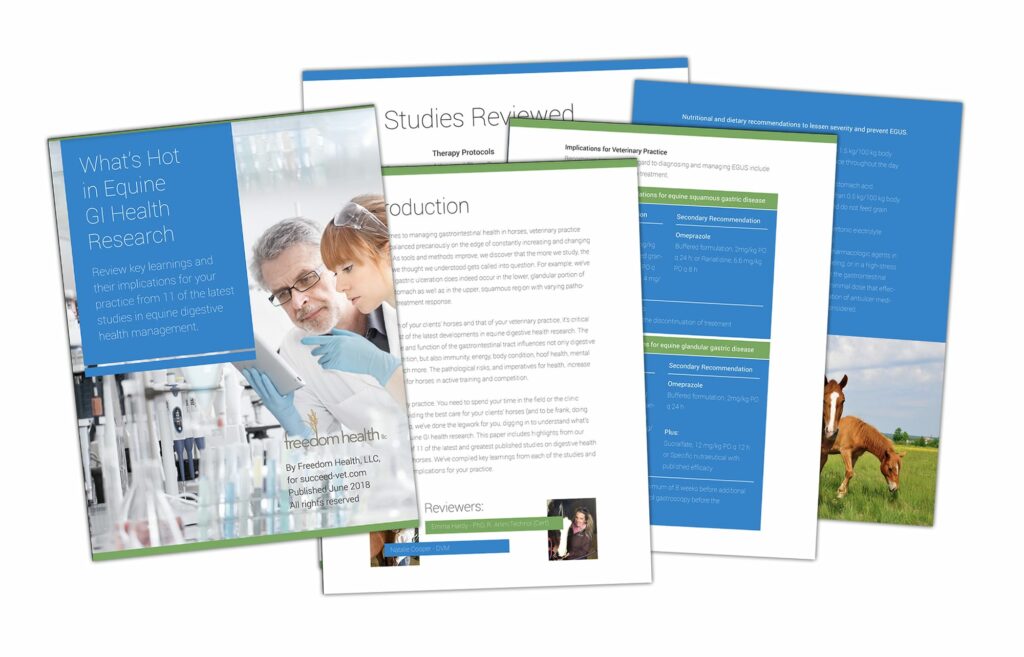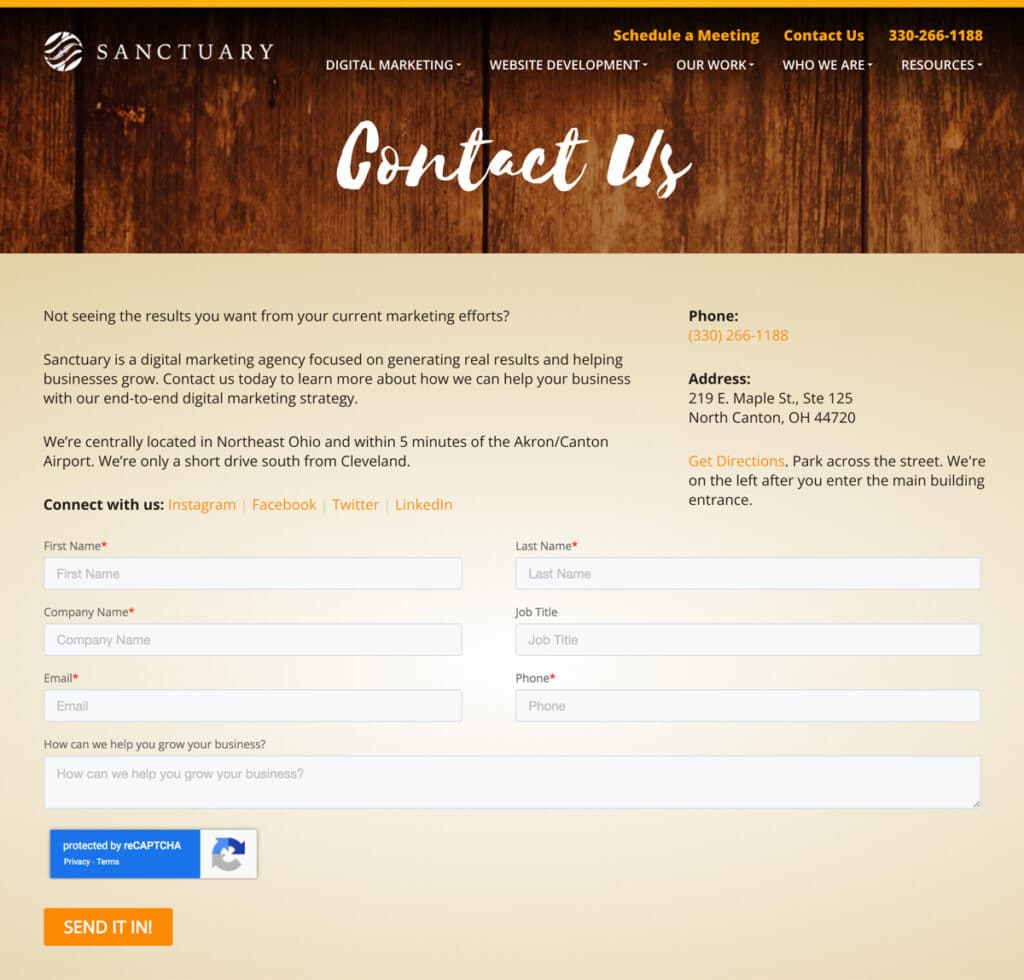
Why does your business have a website? While that question might seem silly at this point in the 21st century, it’s worth thinking about carefully. For most businesses, a website is a lead generation tool, meant to engage with new customers but also serve current customers. If that is the case for your business, everything about the development and web design process of your website should be tailored toward optimizing conversions—and that will be the topic we dive into here!
While there are plenty of different ways to create a website, some of the key elements that contribute to lead generation are the same across the board. We are going to get into what those pieces are, why they are important and how they can be put in place. Let’s get started!
The Big Picture of Lead Generation
Generating new leads is critical for nearly every business. Retaining customers or clients to get repeat business is great, too, but that will only take you so far. To sustain revenue, and to grow into the future, you’ll need to track down new sources of income.
In the modern age, your website is the virtual front door for your business, and everything on that site should be considered a piece of the lead generation puzzle. A new prospect isn’t going to land on your site without forming some kind of opinion about the business and what it offers. Will they be impressed and compelled to learn more? Or will they quickly leave, not having had their expectations met? Throughout the website development and design process, it’s essential to constantly view the site through the eyes of a potential customer.
Once you take this view toward your site, you will quickly see that even the smallest details are important. When you think about lead generation, you might first think about things like sales copy, calls to action, bright “BUY” buttons, and more. And those elements can be important, but they are just the start. When you see the big picture, you’ll see that the whole website is what matters, and taking the time to dial in every last detail is worthwhile.
To help you wrap your mind around the various ways your site can be tuned to perform better on lead generation, we’ve divided up the rest of this article into five sections. Each of these sections will identify an element or area of your site that should be optimized to make sure leads aren’t slipping through the cracks.
1. Simple Site Navigation
It’s easy to make a website too complicated. Given the countless design options and various functions that can be added to a modern site, you can get lost in the woods and wind up with something that is hard to use and creates a frustrating experience for the visitor. A frustrating site is not one that will convert at a high rate.
Simplicity is the name of the game when laying out the structure of your site, and it may be in your best interest to start with a site map. A site map is essentially what it sounds like—a map of all the different pages on your website and the path to get to them. As a general rule of thumb, you want every page on your site to be available within just three clicks or taps from any other page. Ideally, every single page is accessible from the main navigation or the footer. That might not always be possible, but it’s a good goal to keep in mind for the overall structure of the site. If it’s easy to find every page on your site, visitors will not struggle to find the information they need about your products or services.
Here are some other key points to keep in mind relating to site navigation:
- Make the menu a focal point. In many ways, the menu is the heart of your website.
- Make the menu easy to use, and make sure it functions as well on mobile as it does on a desktop or laptop.
- Create clear categories. Divide your content up into clear buckets or categories, which are sometimes called “silos” in the digital marketing world. This will not only make navigation easier, but it could also help you on the SEO front.
- Ample internal links. This is another point that is useful for SEO in addition to helping with navigation. Within your content, be sure to use internal links to point visitors to various other places on your site. For example, if you create a blog post that mentions some of your products, always link to those product pages from within the blog post. This can help you work towards creating extensive and SEO-rich topic pillar pages.
2. Plenty of Information
You aren’t going to get far with a “thin” site. By “thin”, we mean a site without very much content on the pages. It’s not absolutely necessary to maintain an active blog (though it can help) but you should add enough content to your pages for every visitor to know exactly what it is you offer and why they should give you their time and attention. Not only does including ample information help connect with the audience, but it can also cut down on the number of customer service requests you need to handle. If the answers to common questions are right there on the site, fewer of those questions will come in through contact forms and other methods.
Aim for a mix of promotional and informational content on your site to optimize both engagement and conversion. If you take the time to create downloadable content like white papers, e-books and infographics, you can use these pieces as lead generation tools by making them “gated” content. Gated means that the user has to enter a small amount of information in order to download the content, typically at least their name and email address. This is a great way to build your email list so you can create other follow-up drip campaigns.


Providing other lead generation opportunities on your website will help users make softer decisions before leading up to “the big sell”. What this means is, that if a visitor isn’t ready to reach out for a consultation or quote, they may be more willing to give information about other types of literature that will help them in their buying journey.
3. Easy to Connect
If you are putting lead generation at or near the top of your priority list for your website, it only makes sense that it should be easy for visitors to get in touch. That could mean joining a mailing list, or it could mean contacting your team directly to ask a question or request a follow-up. The options you provide your visitors for getting in touch with you will depend on what it is you’re selling, but make sure it’s as easy as possible to reach out.

One common mistake that should be avoided is asking for too many pieces of information on an initial contact form. As you develop your form, try to ask for as little as possible so you can increase the likelihood that someone will finish the form and hit “Submit”. In some cases, you may need to ask for nothing more than an email address and a first name. Such a minimalist approach might not work for all organizations, but do your best to limit how much you ask for at this stage.
It’s also worth remembering that many of your visitors will be using mobile devices, so it might be hard to fill out a big form while tapping on a small smartphone screen. This is another reason to keep your forms as brief as possible. Someone who is interested in your business might give up if they need to fill in several fields on a phone—but inserting just a name and email address is easy enough to do on any device.
4. Target the Right Audience
A website is not going to record a solid conversion rate if it does not bring the right visitors to its pages. Simply put, the people you target need to be the right audience for what you are selling, or it won’t matter how well your site is designed or how many conversion features you include.
So, how do you get the right people to your site? It starts with evaluating your marketing efforts. If you are using content marketing to win organic traffic, for example, make sure those streams of organic traffic are relevant to your site. If you target some low competition keywords to bring people in, but those are the wrong people, you will pretty much have wasted your time and resources. Only target segments of the market where getting traffic will give you a meaningful chance to add conversions and increase sales.
This same concept applies to buying ads to bring visitors to your site. If you get into any pay-per-click advertising, be sure those ads are properly targeted and don’t waste your spend on people who will never turn into customers. This is a topic that can be expanded into an entire article (or e-book) of its own, but it’s a concept that is always good to keep in mind.
5. The Sales Pieces
Finally, it’s important to consider the various sales elements that you can include to drive home the focus on conversions. These are the buttons that take customers to sales pages, along with features like calls-to-action, discount codes that you present for making certain purchases, and more. If everything we have talked about before lays the groundwork for getting a visitor to take action, it’s these sales elements that really finish the job.
For buttons, be sure that they are large enough to click or tap easily, and don’t place them too close to other page elements that could be selected by accident instead. Also, picking a bold color that stands out from the rest of the page is a best practice. This color can still coordinate with the rest of your branding, of course, but it shouldn’t blend in with the background or look too similar to other elements that you’ve included in the design.
As far as writing a good call-to-action, it’s again best to keep it simple. Tell the user what you want them to do without being pushy or annoying about it. If you want them to fill out a form for more information, say as much in the call-to-action and let them take it from there. Leaving ambiguity is only opening the door for some of your visitors to be confused or to hesitate before getting in touch.
The Key Takeaway
If your website is going to function successfully as a lead generation tool, it needs to be designed with that goal in mind. Too many businesses simply create a site because they think it’s important to have one, even if they don’t know why. Don’t fall into that trap. Your site can be a powerful lead generation asset for many years to come and it can provide an impressive return on investment, but only if you help it live up to its potential. Build a site that is designed to convert and watch it help your business reach new heights.
Most Popular Articles

Seeing Favicons in Your Google Search Results? Here’s Why…
Have you noticed anything different in your Google Search results lately? Google added tiny favicon icons to its organic search results in January. It was…

Business Growth and Digital Marketing News & Tips 11-17-24
Are you encouraging and rewarding innovation? Lee Cockerell is the former Executive Vice President of Operations at Walt Disney World. A lover of traditional red…

Business Growth and Digital Marketing News & Tips 11-27-24
A culture of gratitude "Feeling gratitude and not expressing it is like wrapping a present and not giving it." – William Arthur Ward Beyond being…








